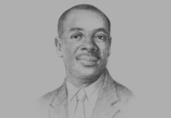Located on Africa’s western coast, Ghana is home to 24m people and a variety of ethnic groups. The country is divided into 10 administrative regions and has a strong executive branch, a unicameral legislature made up of 230 members, and an independent judiciary.
Chapter | Health & Education from The Report: Ghana 2012
Articles & Analysis | The fighter: Ghanaian boxing legend Azumah Nelson is still throwing some punches from The Report: Ghana 2012
The house is a nondescript property surrounded by a tall cement wall. But everybody in this residential neighbourhood in Achimota knows where the Professor lives. The courtyard is quiet save for a siren that rings regularly, marking the beginning and end of three-minute periods. Training rhythm determined by sound, a handful of teenagers swiftly...
Articles & Analysis | Taking care of mums: Making strides to reduce maternal mortality from The Report: Ghana 2012
Although the country may not succeed in reaching its fifth Millennium Development Goal (MDG) of reducing its maternal mortality ratio (MMR) to 185 per 100,000 live births, Ghana has nonetheless made noteworthy strides in improving maternal health over the last 15 years. Indeed, between 1990 and 2007, the MMR has fallen from 740 per 100,000 live...
Interviews & Viewpoints | OBG talks to Franklyn Manu, Rector, Ghana Institute of Management and Public Administration from The Report: Ghana 2012
To what extent are university curricula aligned with the rising demands of the job market?
Articles & Analysis | Biggest slice of the pie: Improving standards takes priority from The Report: Ghana 2012
The large portion of the national budget devoted each year to education highlights the value Ghana places on learning and human development. The Ministry of Education (MoE) is the largest recipient of state funding, and the proportion of government money allocated to the sector has only risen in recent years.


